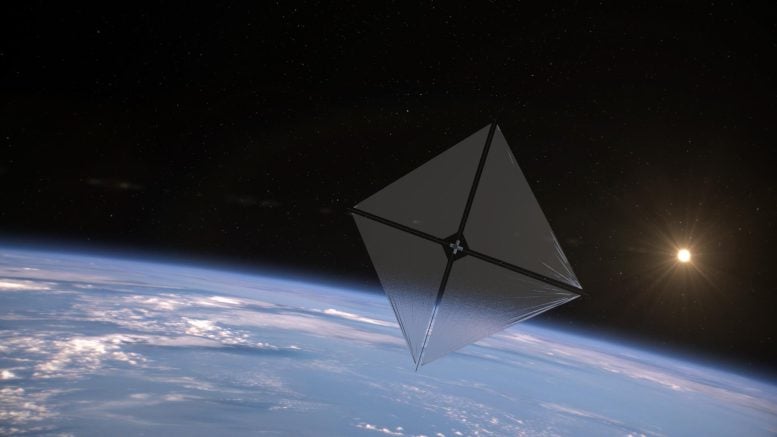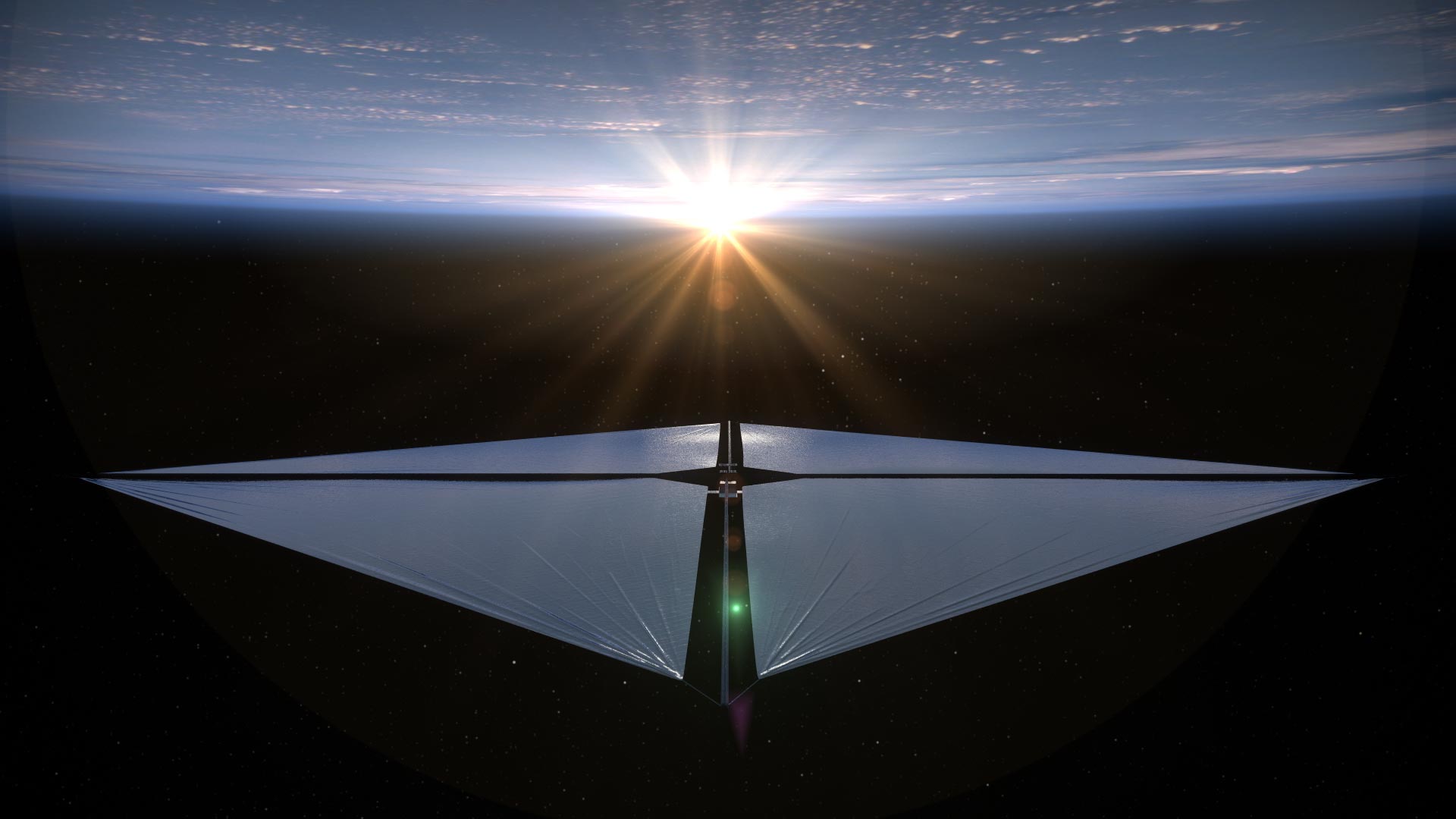An artist’s concept of NASA’s Advanced Composite Solar Sail System spacecraft in orbit as the Sun crests Earth’s horizon. Credit: NASA/Aero Animation/Ben Schweighart

This artist’s concept shows the Advanced Composite Solar Sail System spacecraft sailing in space using the energy of the Sun. Credit: NASA/Aero Animation/Ben Schweighart
Launch and Initial Tests
After launching in April aboard Rocket Lab’s Electron rocket from New Zealand, the mission completed a series of tests and preparations, including testing two-way communications and deploying solar panels – a battery-charging mechanism, not to be confused with the not-yet deployed solar sail.
The project team expects to deploy the sail in the next few weeks. Given its position in orbit, about 600 miles (1,000 kilometers) above Earth, and the reflectivity of the large sail, about 860 square feet (80 square meters), mission managers say the Solar Sail System should be easily visible at times in the night sky once the sail is fully deployed.
Collaborative Efforts in Spacecraft Development
NASA Ames manages the Advanced Composite Solar Sail System project and designed and built the onboard camera diagnostic system. NASA Langley designed and built the deployable composite booms and solar sail system. NASA’s Small Spacecraft Technology program office based at NASA Ames and led by the agency’s Space Technology Mission Directorate (STMD), funds and manages the mission. NASA STMD’s Game Changing Development program developed the deployable composite boom technology. Rocket Lab USA, Inc. of Long Beach, California provided launch services. AST&Defense LLC of College Park, Maryland, designed and built the spacecraft bus.













/https://tf-cmsv2-smithsonianmag-media.s3.amazonaws.com/filer_public/34/31/3431771d-41e2-4f97-aed2-c5f1df5295da/gettyimages-1441066266_web.jpg)



![Ep266: [Lean Series] How to Plan a Responsible Fat Loss Phase Ep266: [Lean Series] How to Plan a Responsible Fat Loss Phase](https://carrotsncake.com/wp-content/uploads/2024/06/Carrots-N-Cake-VIP-Nutrition-Coaching-768x1040.jpeg)
.jpg)

Discussion about this post